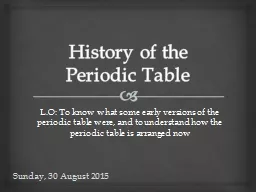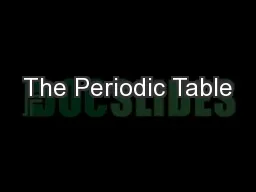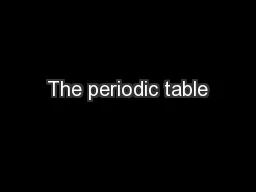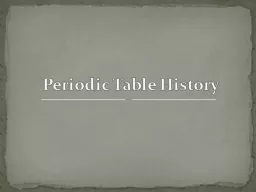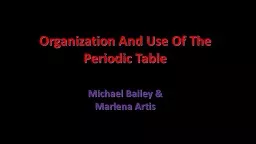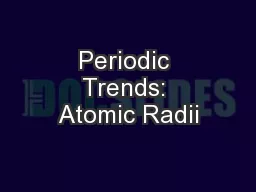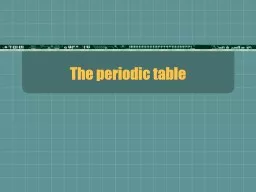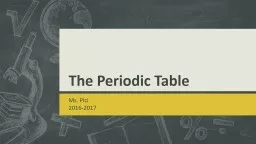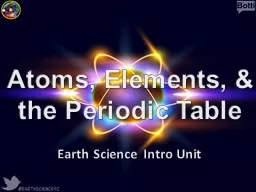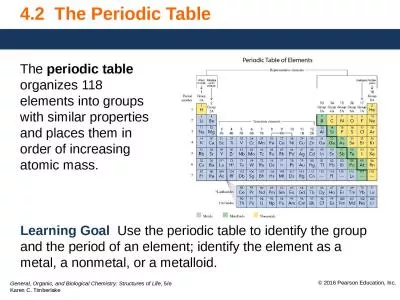PPT-History of the Periodic Table
Author : liane-varnes | Published Date : 2018-09-30
LO To know what some early versions of the periodic table were and to understand how the periodic table is arranged now Sunday 30 August 2015 Look at the periodic
Presentation Embed Code
Download Presentation
Download Presentation The PPT/PDF document "History of the Periodic Table" is the property of its rightful owner. Permission is granted to download and print the materials on this website for personal, non-commercial use only, and to display it on your personal computer provided you do not modify the materials and that you retain all copyright notices contained in the materials. By downloading content from our website, you accept the terms of this agreement.
History of the Periodic Table: Transcript
Download Rules Of Document
"History of the Periodic Table"The content belongs to its owner. You may download and print it for personal use, without modification, and keep all copyright notices. By downloading, you agree to these terms.
Related Documents

